When America was cool: T-Bird Sports Roadster, Buick Riviera
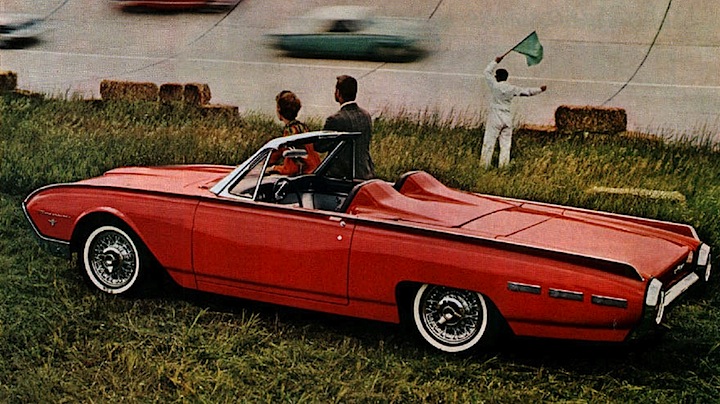
1962 Ford Thunderbird Sports Roadster
By William G. Sawyer
Editor at Large, The Virtual Driver
(November 1, 2016) For decades Cadillac has struggled to resurrect its brand, funneling billions into new product development, racing programs, and lifestyle marketing aimed at proving it’s the equal of the European brands that left GM’s flagship division in their dust during the fourth quarter of the last century. It hasn't worked.
A frustrated Mary Barra turned to the Europeans to resurrect the quintessential American brand. She anointed Johan de Nysschen, a former Audi and Infiniti executive, president of Global Cadillac, investing him with power over his brand perhaps even greater than that exercised by GM Division general managers in the corporation’s heyday.
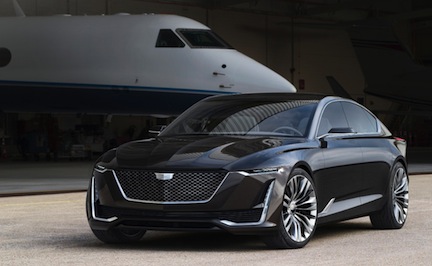 He lost no time moving Cadillac’s headquarters to New York’s trendy Soho district where Uwe Ellinghaus, his hand-picked chief marketing officer, opened Cadillac House, a 12,000 square foot “physical manifestation of the brand’s cultural world.”
He lost no time moving Cadillac’s headquarters to New York’s trendy Soho district where Uwe Ellinghaus, his hand-picked chief marketing officer, opened Cadillac House, a 12,000 square foot “physical manifestation of the brand’s cultural world.”
We got our first glimpse at the product behind the smoke and mirrors at Pebble Beach where de Nysschen unveiled the Escala (pictured at rght), “a statement of intent for the next iteration of the Cadillac design language, and also technical concepts in development for future Cadillac models.” This was our first glimpse of the future of America’s premiere brand, the car that may lead the charge as de Nysschen and Ellinghaus catapult Cadillac back onto the world stage.
What we got was an Audi A7 reimagined by a Hollywood makeup artist. Don’t get me wrong, it’s not bad as contemporary concept cars go, but it lacks the cocky exuberance and self-confidence Detroit exhibited at its peak. For Cadillac to be great again it has to reflect its country of origin. Recreating an Audi won’t make Cadillac their equal any more than simply dying one’s hair blonde and adding false eyelashes will make an ingénue the next academy award winning actress.
There has to be substance behind the hype, and the brand must create world beating product unlike anything else on the market.
Meanwhile, across town, Lincoln struggles with a similar problem. They seem to vacillate between imitating Acura and Audi, a strategy that leads nowhere. Their big idea — the Black Series — features interior packages selected by Lincoln’s design staff that offer neither exclusivity nor self-expression.
We’re constantly befuddled by Lincoln’s (and Ford’s) insistence on limiting interior colors to certain paint colors. My son once called Lincoln to complain that he couldn’t configure a Ruby Red car with a Saddle Brown interior. The concierge informed him that the designers decided those colors don’t go well together, despite the fact that his similarly outfitted BMW looks absolutely stunning. At the very least, Lincoln’s color palette should be unique to the brand rather than shared with its sister division.
Dressing the Lincoln MKZ and Ford Fusion in the same outfit makes them look like fraternal twins; a comparison that makes the Lincoln appear unnecessarily expensive, not more exclusive.
Which made us question what made the American cars of yesteryear great as we chose this issues entries into the Virtual Collection. Neither of our picks is a Cadillac or a Lincoln, although one was meant to be a Cadillac of sorts until GM decided not to reintroduce the LaSalle nameplate. What’s fascinating about these two vehicles is that each was well-suited to the target market despite vastly different approaches to the Personal Luxury segment. They are unapologetically American, reflecting the can-do attitude, chutzpah, and prosperity that engulfed the country in the years following World War II.
Not long after these cars were manufactured Kennedy was dead, the Vietnam War was ratcheting up, and our country started a downward spiral characterized by self-doubt, navel gazing, diminished confidence, and the need on the part of some to prove America was never great in the first place.
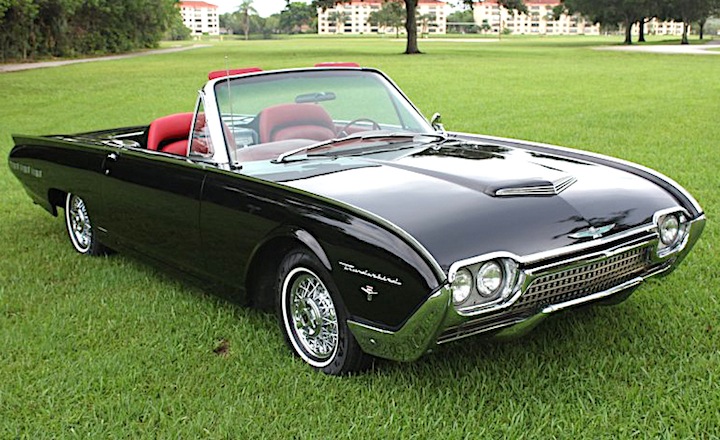
1962 Ford Thunderbird Sports Roadster
When I was in sixth grade, a brilliant red projectile pulled into our driveway. My father, a staid, ultra-practical Ford engineer, looked positively cool sitting in the cockpit of this fighter jet on wheels. Starting at its pointy nose a thin chrome strip slid down its fender peak for what looked like miles to its terminus just above a taillight designed to resemble the exhaust nozzle of a jet engine.
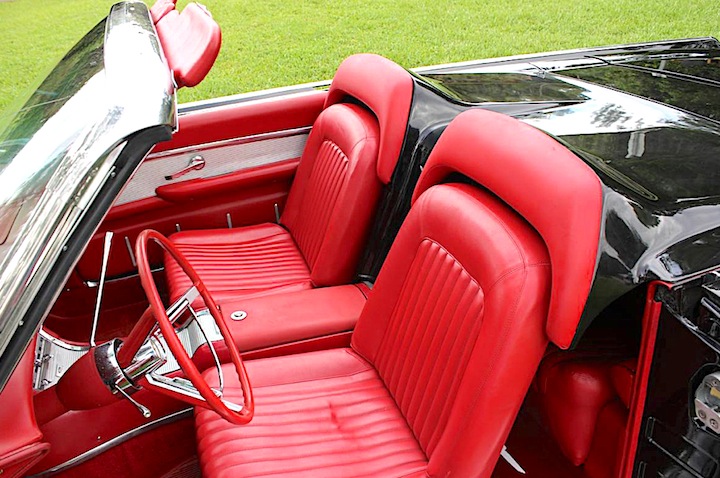 The car was pure excess, from its throaty V8, to its impossibly long rear deck crowned with twin headrests covering the rear seats. It was a gargantuan two seat roadster for the man about town flaunting his success, and I wanted one. Somehow I wrangled a lengthy ride in the co-pilot seat alongside the man I rarely got one-on-one time with, resulting in one of my fondest memories of my father.
The car was pure excess, from its throaty V8, to its impossibly long rear deck crowned with twin headrests covering the rear seats. It was a gargantuan two seat roadster for the man about town flaunting his success, and I wanted one. Somehow I wrangled a lengthy ride in the co-pilot seat alongside the man I rarely got one-on-one time with, resulting in one of my fondest memories of my father.
Our Virtual Collection pick is a raven black over red beauty offered by an unnamed dealer in Pompano Beach, Florida in Hemmings for $69,995. One of 1427 Sports Roadsters built in 1962 (just 435 1963 models were built before the option was retired), it was sold through the Lakeland, Fla., Ford dealer to its first owner in November, 1961. We hope the sparkling Kelsey-Hayes wire wheels hold up better than the originals.
Those provided on the initial batch of Sports Roadsters proved problematic as Elvis Presley learned when one failed at speed, making national headlines. Ford rushed a set of steelies and hubcaps to Sports Roadster owners while they huddled with the Kelsey-Hayes boys to find a solution. Providing those owners and future buyers with new wheels with wire size increased from 1/4” to 5/16” provided an acceptable margin of safety, although the cars also were retrofitted with inner tubes due to frequent pressure loss.
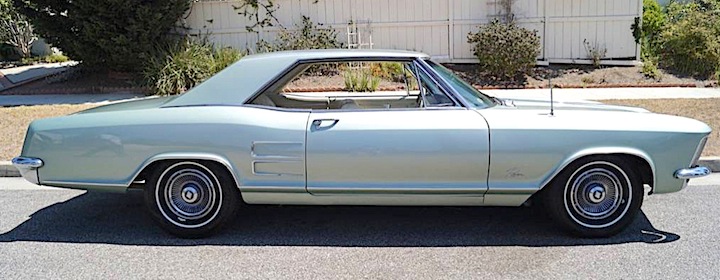
1963 Buick Riviera
General Motor’s approach to the personal luxury segment couldn’t be more different from Ford’s offering. Ned Nickles designed XP-715, a styling study for what some within GM hoped would become a Cadillac LaSalle. When Cadillac balked, the project was offered to other divisions. Buick won and the XP-715 was adapted to fit a shortened version of the division’s cruciform frame. No less of an authority than Sergio Pininfarina reportedly declared it to be “One of the most beautiful cars America ever built,” when it appeared at the 1963 Paris Auto Show.
And beautiful it is, featuring dramatic, forward thrusting fenders, coke bottle styling, and a formal roof line that somehow blends perfectly with its aggressive stance. The Riviera projects power and grace in a dignified package devoid of self-consciousness. Like a blue-blood body builder you sense its power, yet never doubt its heritage.
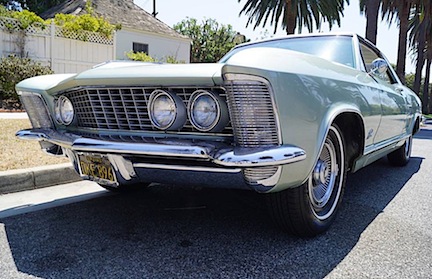 West Coast Classics of Santa Monica has a beautiful, 51,000 mile Riv advertised in Hemmings for $26,500. One of a reported 667 cars painted in Willow Mist green, its plush Sandlewood vinyl buckets and floor mounted shifter carry the formal-but-sporty theme inside. Options include Soft Ray tinted glass, remote outside rear view mirror, white sidewall tires, and power windows. Said to be rust free and mechanically sound, it’s a collector car for the price of a new compact.
West Coast Classics of Santa Monica has a beautiful, 51,000 mile Riv advertised in Hemmings for $26,500. One of a reported 667 cars painted in Willow Mist green, its plush Sandlewood vinyl buckets and floor mounted shifter carry the formal-but-sporty theme inside. Options include Soft Ray tinted glass, remote outside rear view mirror, white sidewall tires, and power windows. Said to be rust free and mechanically sound, it’s a collector car for the price of a new compact.
These Virtual Collection inductees represent what Cadillac and Lincoln should strive for, confidence and swagger in an unmistakably American package. In a world where leading from behind has proven to be a losing formula, it’s time to take a cue from America’s original personal luxury cars and reclaim our position on the world stage.
William G. Sawyer writes about vehicles of the past in his column, The Virtual Collection, that appears twice a month at The Virtual Driver web site. Abandoned Cars and Trucks will publish his entertaining columns from time to time.
